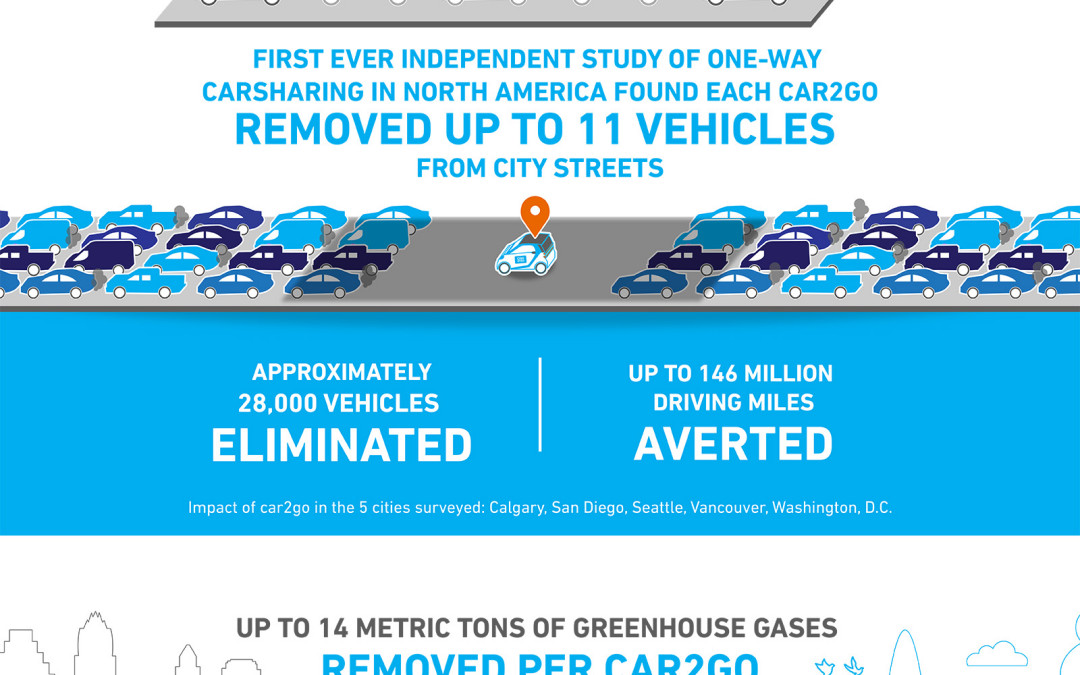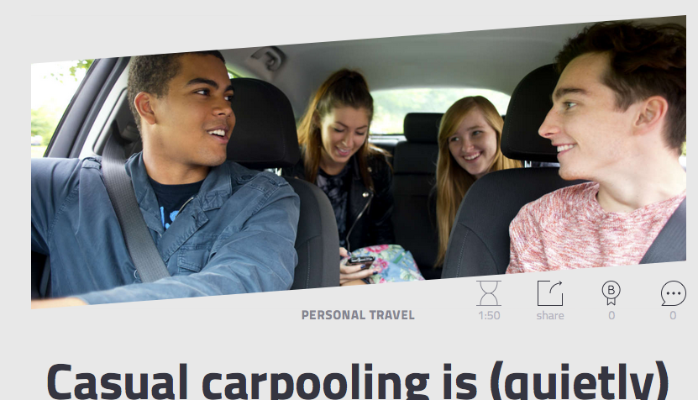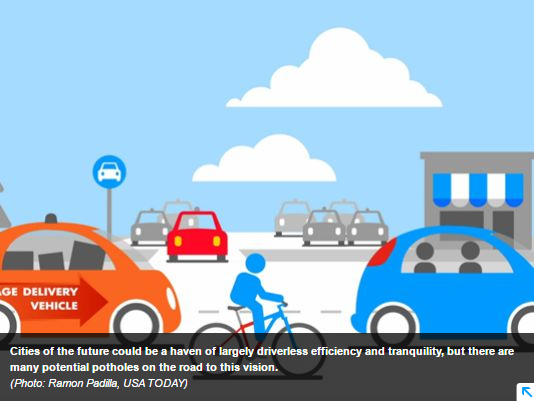
by Innovative Mobility Research | Jul 26, 2016 |
Drive, ride or share? It’s a question more people are asking themselves as transportation options are rapidly evolving. But what does it mean for road congestion and the environment? In the first-ever North American one-way carsharing impact study, the Transportation Sustainability Research Center (TSRC) reveals that car2go has a substantive impact on improving urban mobility and reducing greenhouse gas emissions. To read the rest of the article, visit...

by Innovative Mobility Research | May 13, 2016 |
Susan Shaheen, Co-Director, Transportation Sustainability Research Center and Adjunct Professor, UC Berkeley May 3, 2016 Casual carpooling is a user-run form of ridesharing in which riders connect with drivers usually nearby public transit hubs. While its exposure in the media has been limited compared to its shared-mobility counterparts like on-demand ridesharing and bikesharing, casual carpooling has been an option in some cities for more than thirty years. Despite existing for more than three decades, relatively little quantitative research has been conducted on the topic, perhaps due to casual carpooling’s informal nature. Recently, researchers at UC Berkeley’s Transportation Sustainability Research Center set out to gain a better understanding of the user characteristics and motivations for using casual carpooling in San Francisco. To read the rest of the article, visit:...
by Innovative Mobility Research | Apr 8, 2016 |
Kate Galbraith Thursday 21 January 2016 Are on-demand ride services like Uber and Lyft good or bad for the environment? It’s an increasingly urgent question as the services proliferate, but the answer is currently unclear . The companies have held their data close and are only now beginning to share, making it hard to assess critical questions like how people would have gotten to their destinations if Uber and Lyft did not exist. To read the rest of the article,...

by Innovative Mobility Research | Feb 8, 2016 |
Marco della Cava, 12:28 p.m. EST November 13, 2015 SAN FRANCISCO – The city of the future has had countless fantasy blueprints, from The Jetsons’ pleasant hive of automated efficiency to Blade Runner’s dystopian tangle of urban chaos. But the reality is the city of future is closer than you think, as tech companies and automakers floor the pedal on projects ranging from cars that drive themselves to apps that aggregate transportation options. Conversations with mobility experts here and abroad paint a picture of an urban revolution that is already underway in a patchwork of cities from Seattle to Stockholm. “The main thing with automated and connected tech is to make sure it’s reliable first,” says Chris Hendrickson, director of the Traffic21 Institute at Carnegie Mellon University. “But the opportunities for change are impressive.” To read the rest of the story,...
by Innovative Mobility Research | Nov 3, 2015 |
Authors: Susan Shaheen, Nelson Chan, Apaar Bansal, Adam Cohen Date Published: November 3rd, 2015 Abstract: Shared mobility – the shared use of a vehicle, bicycle, or other mode – is an innovative transportation strategy that enables users to gain short-term access to transportation modes on an “as-needed” basis. The term shared mobility includes various forms of carsharing, bikesharing, ridesharing (carpooling and vanpooling), and on-demand ride services. It can also include alternative transit services, such as paratransit, shuttles, and private transit services, called microtransit, which can supplement fixed-route bus and rail services. With many new options for mobility emerging, so have the smartphone “apps” that aggregate these options and optimize routes for travelers. In addition to innovative travel modes, new ways of transporting and delivering goods have emerged. These “courier network services” have the potential to change the nature of the package and food delivery industry. Shared mobility has had a transformative impact on many global cities by enhancing transportation accessibility, while simultaneously reducing driving and personal vehicle ownership. A number of environmental, social, and transportation-related benefits have been reported due to the use of various shared mobility modes. Several studies have documented the reduction of vehicle usage, ownership, and vehicle miles or kilometers traveled (VMT/VKT). More research is needed, nevertheless, to further understand impacts on a city and regional level and across the wide range of shared mobility modes. Shared mobility could also extend the catchment area of public transit, potentially playing a pivotal role in bridging gaps in existing transportation networks and encouraging multi-modality by addressing the first-and-last mile issue related to public transit access. Furthermore, shared mobility...




